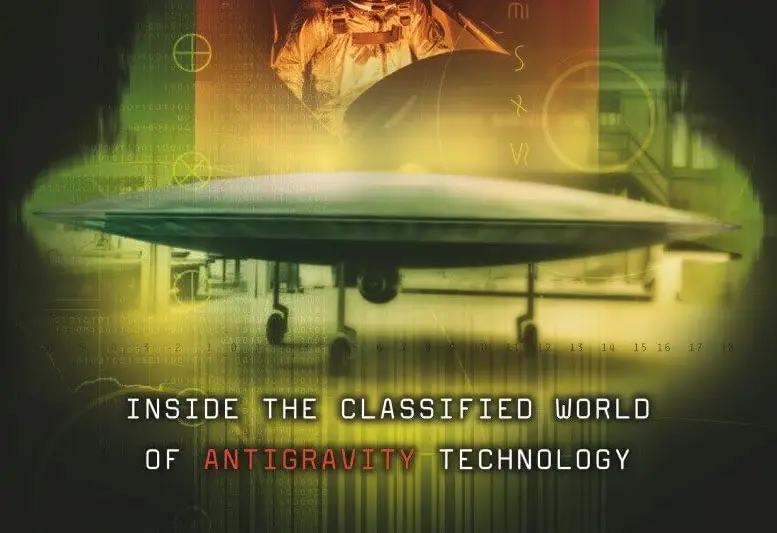
In the annals of American history, tales of unidentified flying objects (UFOs) and their secretive builders have long captivated the imagination of the public. Among these stories, the account of Bob Lazar stands out as one of the most famous and controversial. Lazar claimed to have worked on reverse engineering alien spacecraft at a secret site near Area 51. However, the narrative of UFO development in the United States encompasses more than just Lazar’s revelations. There exists a lesser-known but equally fascinating figure: Townsend Brown, an inventor whose groundbreaking work in the mid-20th century may have significantly contributed to the U.S. government’s understanding and potential development of UFO-like technology.
Townsend Brown’s journey into the realm of advanced propulsion began not with extraterrestrial artifacts but with the pursuit of a scientific holy grail: unifying the forces of electromagnetism and gravity. Unlike Lazar, whose story is filled with claims of alien technology, Brown’s work was grounded in experimental physics. He explored the potential of high-voltage electrostatic charges to produce propulsion, a concept that might explain the physics-defying maneuvers reported by witnesses of UFOs.
Explore the groundbreaking journey of Townsend Brown in Paul Schatzkin's captivating biography, "The Man Who Mastered Gravity." Uncover the story behind his revolutionary work. Amazon link: https://amzn.to/3UTdeSq
Dive into "The Hunt for Zero Point" by Nick Cook, where the esteemed aviation journalist embarks on a comprehensive quest to unravel the mysteries of Antigravity in Aerospace. Discover the untold stories - Amazon link: https://amzn.to/3IdzFde
Brown’s most notable contribution to the field was the development of the Biefeld-Brown effect, an anomalous propulsion phenomenon observed when electric charge is applied to asymmetric capacitors in a vacuum. This effect, which seemed to allow objects to levitate or move without conventional propulsion, suggested a potential method for creating craft capable of extraordinary flight capabilities. Brown’s experiments, conducted from the 1920s onward, attracted the attention of both the U.S. Navy and the newly formed CIA, who were interested in any technology that could offer a strategic advantage during the Cold War.
Despite the groundbreaking nature of his work, Townsend Brown remained a relatively obscure figure in the history of American aerospace. His contributions were overshadowed by disinformation campaigns and the classified nature of his research. The government’s interest in his inventions was evident, as evidenced by his coordination with key figures in the American intelligence and scientific communities, including William Stephenson (Churchill’s super spy) and Edward Teller (the father of the hydrogen bomb). Brown’s involvement in projects with these high-profile individuals hints at the significance of his work and its potential applications in classified aerospace projects.
VIDEO: The Man Who Built UFOs For The CIA (Not Bob Lazar)
One of the most compelling aspects of Townsend Brown’s story is the mystery surrounding the practical application of his research. While public records and acknowledged inventions, like the Ionic Breeze air purifier, are relatively mundane, rumors persist that his more revolutionary work in electrogravitics was absorbed into black aerospace programs. Such programs, beyond the reach of public scrutiny, could potentially explain the advanced propulsion capabilities attributed to UFOs observed by military pilots and civilians alike.
Support me on Patreon and receive news and videos before they’re published publicly!
Link: patreon.com/LUFOS
The notion that Townsend Brown might have experimentally discovered a link between electromagnetism and gravity opens up intriguing possibilities. It suggests a paradigm shift in our understanding of physics and propulsion, one that could have profound implications for aerospace engineering and our conceptualization of interstellar travel. If Brown’s theories and experiments were indeed incorporated into secret aerospace projects, it could mean that the foundation for UFO-like technology has existed for decades, hidden not in alien wreckage but in the work of a visionary American inventor.
In the shadow of more sensational stories like Bob Lazar’s, Townsend Brown’s contributions to the field of unconventional propulsion and his potential role in the development of UFO technology for the CIA deserve a closer examination. His life and work represent a fascinating chapter in the secret history of American innovation, one that challenges our understanding of the boundaries between science fiction and scientific fact.


Leave a Reply